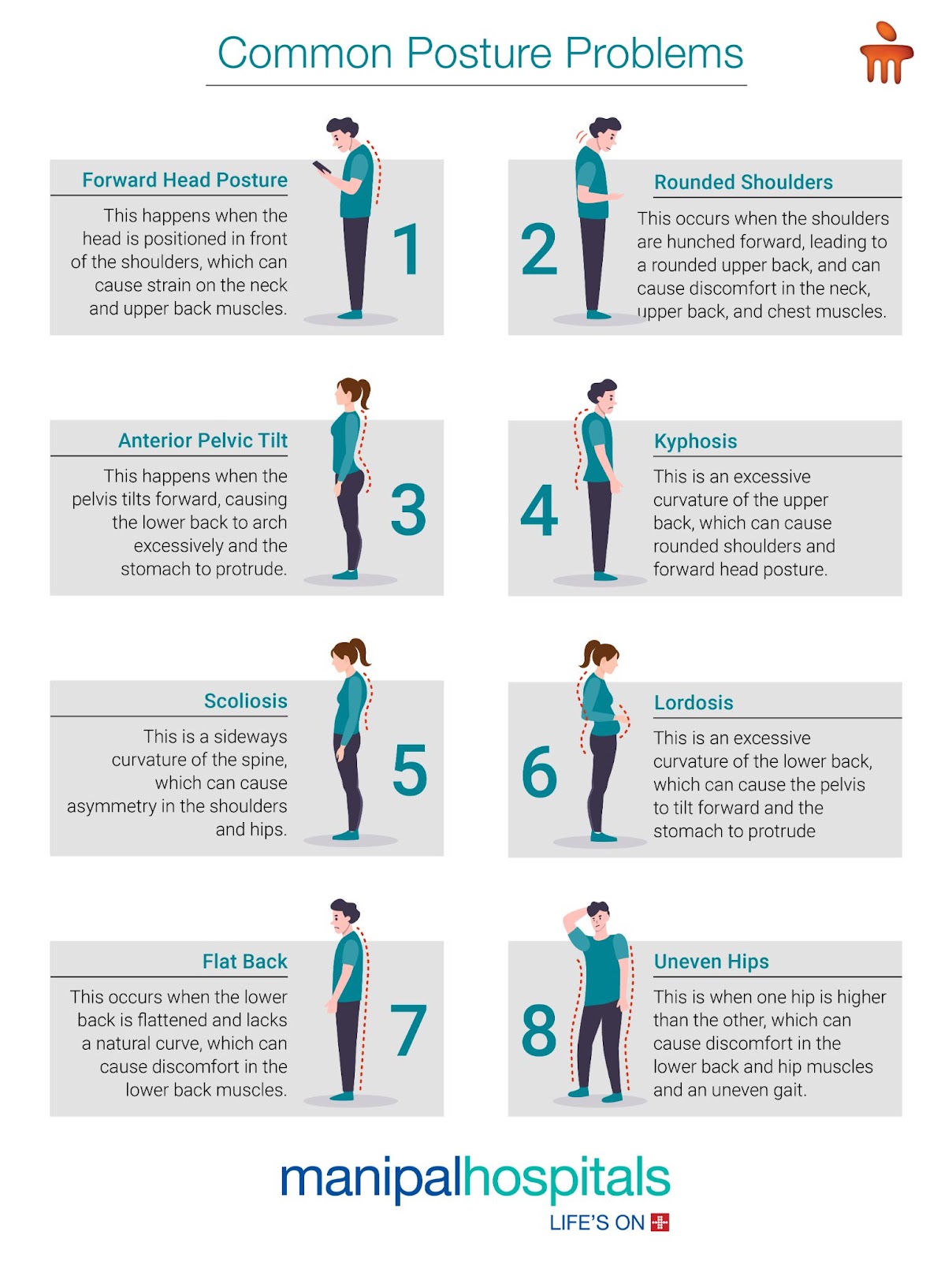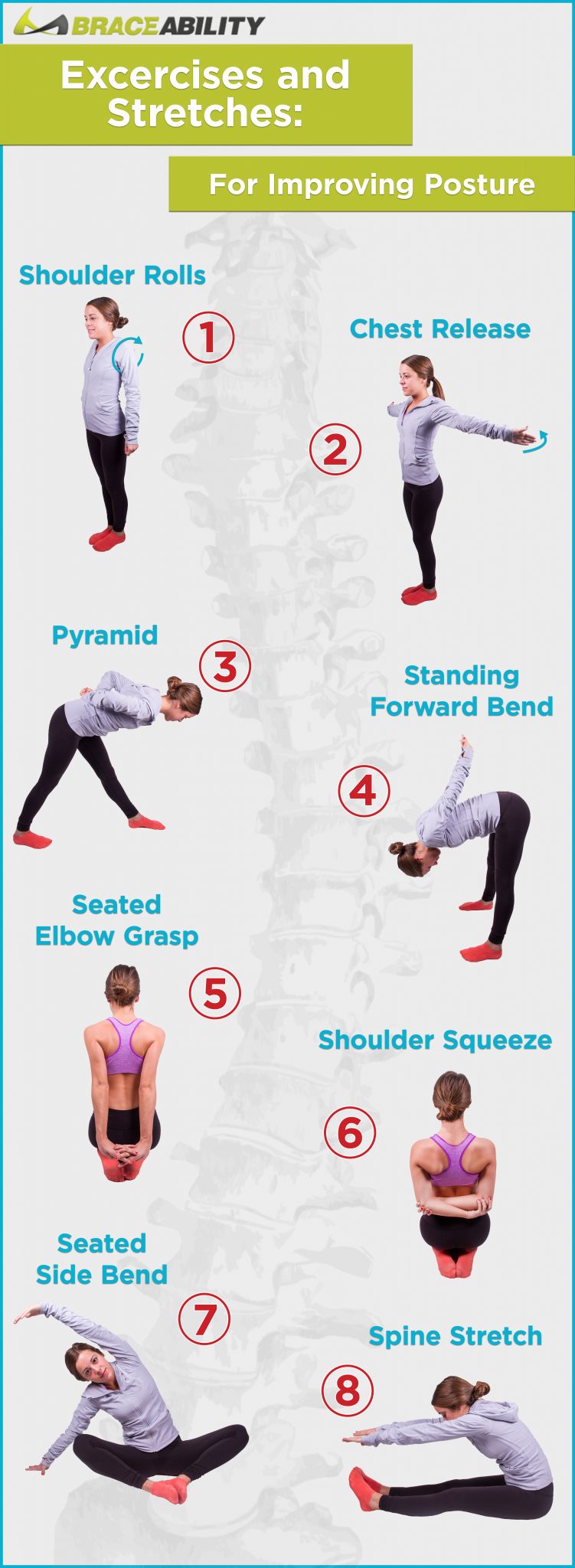Improve your posture with these effective exercises. Strengthening your core, stretching your chest and shoulders, and practicing good body alignment can all help improve your posture.
Good posture is essential for overall health and well-being. By maintaining proper alignment, you can prevent back pain and reduce the risk of injury. Additionally, good posture can boost your confidence and make you appear more confident and poised. We will explore some simple and effective posture improvement exercises that you can incorporate into your daily routine.
Whether you spend long hours sitting at a desk or have poor posture habits, these exercises can help you stand taller and feel better. Let’s dive into the world of posture improvement and discover effective ways to achieve better alignment and strength.
Importance Of Good Posture
Having a good posture is crucial for a healthy lifestyle. Not only does it make you appear more confident and attractive, but it also plays a vital role in your overall well-being. Poor posture can lead to a wide range of physical and mental health issues, while maintaining good posture can bring numerous benefits to your body and mind.
Effects Of Poor Posture
Poor posture, characterized by slouching or hunching over, can have several negative effects on your body:
- Back and neck pain: Slumping forward or leaning to one side can strain your muscles and joints, resulting in chronic pain.
- Headaches: Tension in the neck and shoulders caused by poor posture can trigger frequent headaches.
- Impaired digestion: A hunched posture can compress your organs, interfering with proper digestion and leading to issues like acid reflux.
- Respiratory problems: Slouched posture restricts your lung capacity, making it harder for you to take deep breaths and impacting your overall respiratory function.
- Decreased energy levels: Poor posture can lead to fatigue, as your body has to work harder to support itself in an imbalanced position.
Benefits Of Good Posture
Maintaining good posture, on the other hand, can bring about a range of positive effects:
- Improved alignment: Good posture helps align your spine, reducing strain on your muscles and joints.
- Enhanced breathing: A proper upright posture allows your lungs to expand fully, promoting better oxygen flow and increasing energy levels.
- Reduced risk of injury: By maintaining good posture, you reduce the risk of sprains, strains, and other injuries that can occur due to poor body positioning.
- Increased confidence: Standing tall with good posture exudes confidence and self-assuredness, making you appear more attractive and professional.
- Better digestion: Proper alignment and an elongated spine result in improved digestion and reduced chances of digestive issues.
While it may take some conscious effort and practice to improve your posture, the benefits far outweigh the effort. Incorporating posture improvement exercises into your daily routine can make a significant difference in your overall health and well-being.

Credit: www.pinterest.com
Common Posture Problems
Improving posture is vital to prevent muscle and joint pain, improve breathing, and boost overall well-being. Identifying common posture problems is the first step toward effective posture improvement. Let’s explore the most prevalent posture problems and learn about suitable exercises to address them.
Forward Head Posture
Forward head posture is a condition where the head juts forward from its natural position, putting strain on the neck and shoulders. This often results from excessive time spent looking at screens or poor sitting habits. Exercises such as chin tucks and neck stretches can help counteract forward head posture and strengthen the neck muscles.
Rounded Shoulders
Rounded shoulders occur when the shoulders hunch forward, leading to a curved upper back. This can be caused by prolonged sitting or slouching. To counteract rounded shoulders, exercises like shoulder blade squeezes and chest-opening stretches can help improve posture and alleviate discomfort.
Anterior Pelvic Tilt
Anterior pelvic tilt is characterized by the pelvis tilting forward, causing the lower back to arch excessively. This posture problem is often attributed to prolonged sitting and lack of core strength. Engaging in exercises like pelvic tilts and hip flexor stretches can aid in correcting anterior pelvic tilt and strengthening the core muscles.
Posture Improvement Exercises
When it comes to maintaining good posture, incorporating specific exercises into your routine can make a significant difference. Posture improvement exercises not only help in relieving muscle tension and pain but also contribute to better overall health. Here are some effective exercises to help you improve your posture:
Neck Retractions
Start by sitting or standing up straight with your shoulders relaxed. Gently tuck your chin in towards your neck while keeping your gaze forward. Hold this position for a few seconds, then release. Repeat this movement multiple times to strengthen the muscles at the front of your neck and improve your neck alignment.
Wall Angels
Stand with your back against a wall and your feet approximately 6 inches away from the baseboard. Raise your arms to shoulder height and bend your elbows at 90-degree angles. Slowly slide your arms up the wall, maintaining contact with the wall at all times, then back down to the starting position. This exercise helps in opening up the chest and strengthening the upper back muscles, promoting proper shoulder alignment.
Hip Flexor Stretches
One major contributor to poor posture is tight hip flexors. To perform a hip flexor stretch, kneel on one knee with your other foot flat on the ground in front of you. Gently push your hips forward while keeping your upper body upright. Hold the stretch for 20-30 seconds on each side to release tension in the hip flexors and improve pelvic alignment.
Plank Exercise
Assume the plank position with your hands directly under your shoulders and your body in a straight line from head to heels. Engage your abdominal muscles and hold this position for 20-30 seconds, gradually increasing the duration as you become stronger. The plank exercise helps in strengthening the core muscles, which are essential for maintaining proper posture.
Incorporating Posture Exercises Into Daily Routine
Improving your posture is essential for maintaining overall health and well-being. By incorporating posture exercises into your daily routine, you can strengthen your muscles and contribute to better alignment and balance. Here are some simple yet effective tips to help you make posture exercises a regular part of your day:
Setting Reminders
Stay on track with your posture improvement goals by setting reminders throughout the day. These reminders can be in the form of alarms on your phone or calendar notifications, prompting you to take a break and complete a quick posture exercise. By dedicating just a few minutes to these exercises, you can gradually improve your posture over time.
Desk Posture Tips
If you spend a significant amount of time working at a desk, it’s important to pay attention to your posture while seated. Here are some tips to help you maintain good posture:
- Position your monitor at eye level so that you’re not straining your neck to look at the screen.
- Keep your feet flat on the floor to distribute your weight evenly.
- Make sure your chair provides proper support for your lower back.
- Avoid crossing your legs or sitting in a slouched position for an extended period.
By implementing these desk posture tips and incorporating short exercise breaks into your work routine, you can mitigate the negative effects of prolonged sitting and promote better posture.
Improving your posture doesn’t have to be a daunting task. By making small adjustments and incorporating posture exercises into your daily routine, you can gradually strengthen your muscles and improve your overall posture. Remember, consistency is key, so start today and reap the benefits of a healthy, aligned spine.
Seeking Professional Help
Seeking professional help for posture improvement is crucial for effective and sustainable results. Let’s explore how physical therapy and chiropractic care can play a significant role in correcting posture issues.
Physical Therapy
Physical therapy offers targeted exercises and techniques to strengthen muscles and improve posture alignment.
- Experienced therapists create personalized plans fitting your specific needs
- Focus on core strength and flexibility to support proper posture
Chiropractic Care
Chiropractors can address spinal misalignments contributing to poor posture and provide adjustments for realignment.
- Hands-on treatments help correct postural imbalances
- Regular adjustments can aid in long-term postural improvement
By incorporating professional guidance from physical therapists and chiropractors, individuals can effectively work towards achieving better posture and overall physical well-being.

Credit: www.manipalhospitals.com
:max_bytes(150000):strip_icc()/FeatureImage_5ExercisesforBetterPosture_KaileyWhitman-cae9c6c8d3d04d85b09736fa56f9752b.jpg)
Credit: www.realsimple.com
Frequently Asked Questions On Posture Improvement Exercises
Can You Correct Years Of Bad Posture?
Yes, you can correct years of bad posture through consistent exercises, proper ergonomics, posture awareness, and seeking professional help.
What Exercise Is Best For Correcting Posture?
The best exercise for correcting posture is a combination of stretching and strengthening exercises for the core, back, and shoulders. These could include exercises like planks, bridges, and rows performed regularly.
Do Posture Exercises Actually Help?
Yes, posture exercises can help improve posture, strengthen muscles, and reduce discomfort. Consistent practice is essential for seeing results.
Can You Fix Really Bad Posture?
Yes, you can fix really bad posture with consistent exercise, stretching, and ergonomic adjustments. It’s important to maintain proper alignment and strengthen core muscles. Seeking professional help from a physical therapist or chiropractor can also make a significant difference.
Conclusion
Incorporating posture improvement exercises into your daily routine can have a significant impact on your overall health and well-being. By strengthening the muscles that support your spine and practicing proper alignment, you can reduce pain, improve posture, and enhance your confidence and appearance.
Remember to start slowly and gradually increase the intensity of your exercises, listening to your body’s needs. With consistency and perseverance, you can achieve a better posture and enjoy the long-lasting benefits it brings.
